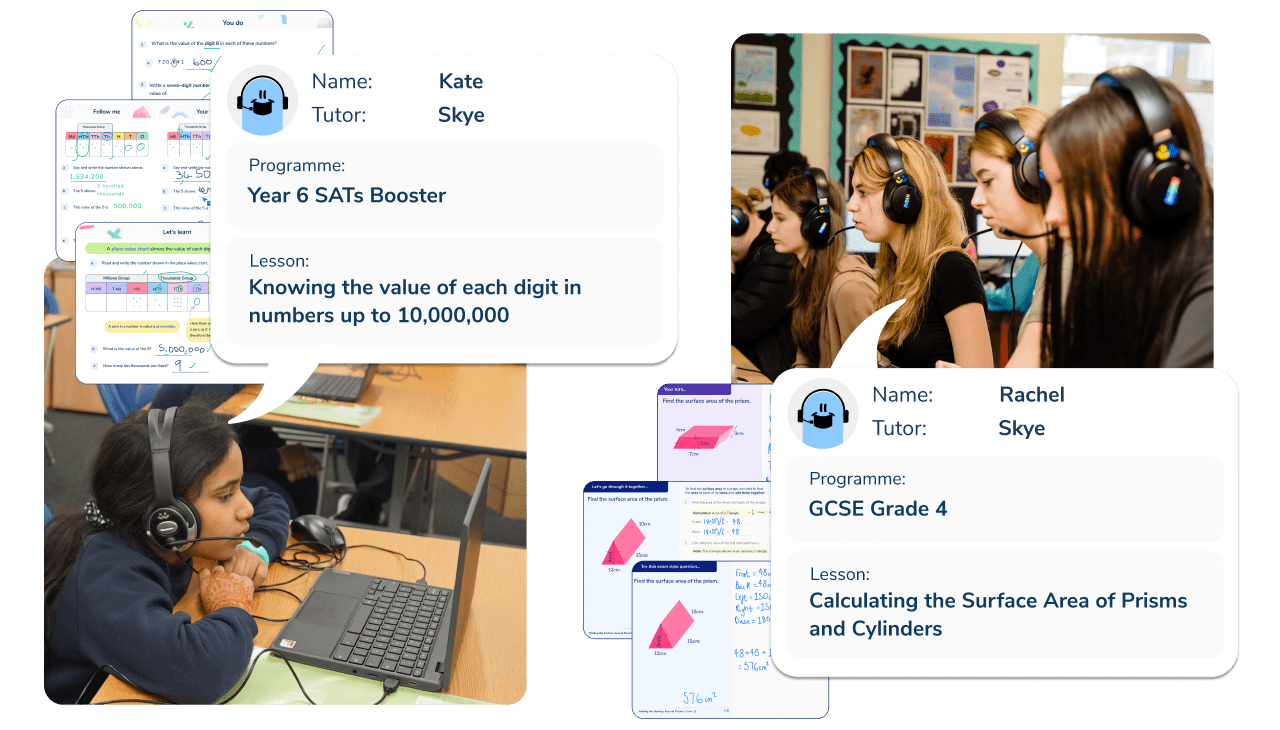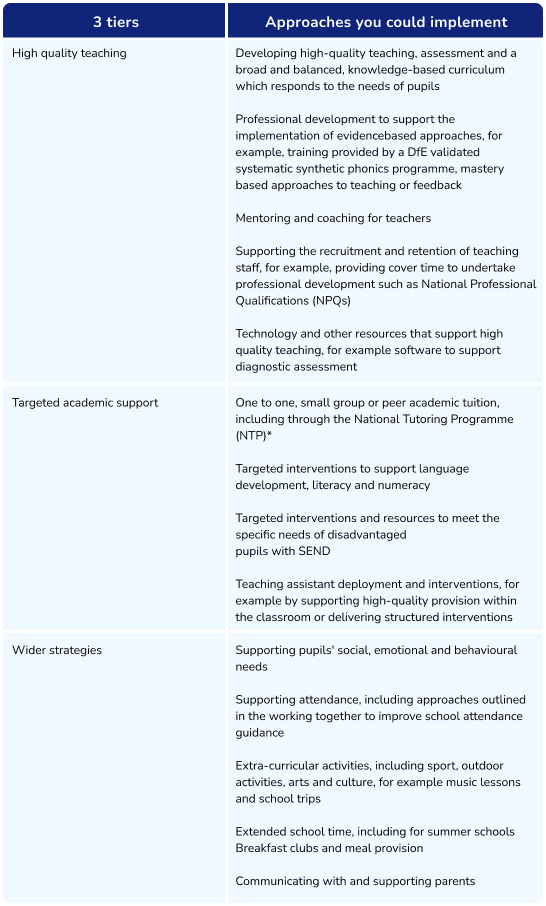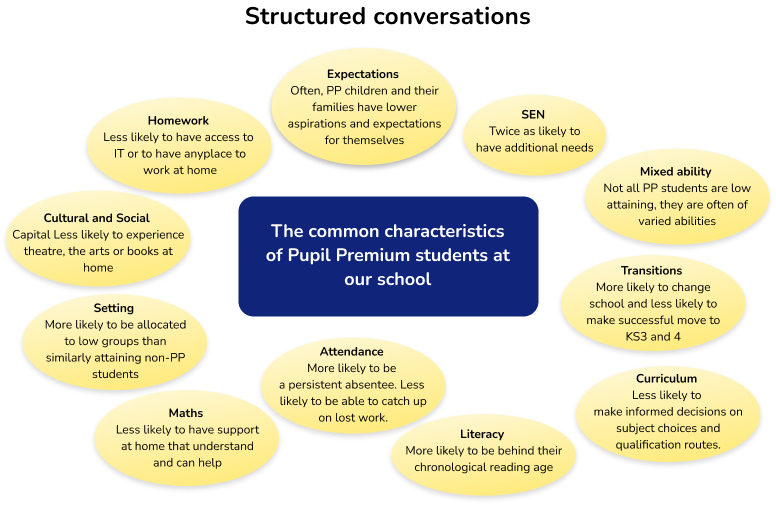How To Create A Comprehensive And Effective Pupil Premium Strategy: 10 Methods To Develop Your Strategy Statement
Schools in receipt of pupil premium must publish a pupil premium strategy statement on their website to show how they support disadvantaged pupils.
In this article, we’ll explore practical steps and approaches schools can take to create an effective and sustainable pupil premium strategy that meets the requirements of Ofsted and the Department for Education.
What is a pupil premium strategy?
A pupil premium strategy is a document schools must publish detailing how they spend and allocate their pupil premium funding.
Pupil premium funding became available to state-funded schools in England in April 2011. During this period, schools received an allocation of £1.25 billion to close the attainment gap between eligible pupils and their less disadvantaged peers.
Since the introduction of pupil premium, there have been many changes to the policy and funding and this post will explore how schools can create an effective pupil premium strategy statement to support pupils.
Why do schools need pupil premium?
A number of pupils across England fall under the disadvantaged criteria. These pupils are less likely to achieve the expected level by the time they finish school than their peers. Pupil premium plays an important role in supporting these pupils and raising their educational outcomes.
Research from the Education Endowment Foundation (EEF) identifies a multitude of contributing factors. While many of these are contextual, there are clear trends and patterns.
To tackle the attainment gap with pupil premium funding, you must first understand why it exists.
The EEF’s Attainment Gap Report, published pre-pandemic, found the following:
- An attainment gap between disadvantaged and non-disadvantaged children is already established at the age of 5
- The attainment gap grows considerably worse over the next 11 years of a pupil’s education
- When children start school, the relative outcomes of pupils from disadvantaged backgrounds compared to their peers is 4 months
- At the end of primary school, this has more than doubled to 9 and a half months
- By the end of secondary school, the gap more than doubles again to 19 months
A post-pandemic EEF evidence review in May 2022 concluded that:
- The impact is greater for young people from disadvantaged backgrounds
- Evidence shows that the attainment gap between disadvantaged children and their peers has grown
- There is some evidence that children in Key Stage 1 have been greatly impacted
- Research from the DfE shows the most significant impact was on Key Stage 3 students
- There has been some recovery since the pandemic, in part with help from recovery premium funding allocation
- Current attainment levels in maths and English are below pre-pandemic levels for all pupils
More than ever, schools have a moral obligation and accountability to develop a well-considered pupil premium strategy statement to close the attainment gap.
Maintained schools and academies receive the pupil premium grant for eligible pupils on the premise that they will fulfil the following success criteria:
- Raise the educational attainment and outcomes of disadvantaged pupils of all abilities to help them reach their potential
- Provide support for children and young people with parents in the regular armed forces

Meet Skye, the voice-based AI tutor making maths success possible for every student.
Built by teachers and maths experts, Skye uses the same pedagogy, curriculum and lesson structure as our traditional tutoring.
But, with more flexibility and a lower cost, schools can scale online maths tutoring to support every student who needs it.
Watch Skye in actionWho is entitled to pupil premium funding in the 2025/2026 academic year?
Pupil premium funding is not ring-fenced for individual eligible pupils but eligible children must meet the success criteria.
In 2025/2026 the success criteria to receive pupil premium funding is:
- Pupils recorded as eligible for free school meals (FSM), or recorded as eligible in the past 6 years, including eligible children of families who have no recourse to public funds (NRPF),
- Children looked after by local authorities, referred to as looked-after children,
- Children previously looked after by a local authority or other state care, referred to as previously looked-after children.
- Service pupil premium is available for children who have parents serving in the Armed Forces
Virtual School Headteachers are accountable for pupil premium funding for Looked After Children (LAC).
The school census provides the eligibility data required. It is vital to identify these students accurately. Some eligible pupils are harder to identify than others. For example, those who have previously been in care or adopted.
A good method for this is to communicate regularly through all mediums to parents and carers. Evidence brought into school can be redacted to support these children.
Pupil premium strategy funding 2025/26
Pupil premium funding varies each academic year and a school’s strategies will depend on the amount of funding they receive.
| Pupil eligibility criteria | Amount of funding for each primary-aged pupil | Amount of funding for each secondary-aged pupil | Funding is paid to |
| Pupils who are eligible for free school meals, or have been eligible in the past 6 years | £1,515 | £1,075 | School |
| Pupils previously looked after by a local authority or other state care | £2,630 | £2,630 | School |
| Children who are looked after by the local authority | £2,630 | £2,630 | Local Authority |
| Children who are eligible for the Service Premium | £350 | £350 | School |
The Department for Education sets out the payment schedule as follows:
Payments sent to local authorities on:
- 30 June 2025
- 30 September 2025
- 31 December 2025
- 31 March 2026
Payments sent to academy trusts (and free schools) on:
- 8 July 2025
- 8 October 2025
- 9 January 2026
- 10 April 2026
Payments sent to non-maintained special schools on:
- 18 August 2025
- 17 October 2025
- 16 January 2026
- 17 April 2026
The Senior Leader’s Guide to Pupil Premium [Updated for 2023/24]
Everything you need to know about pupil premium funding and how to use it effectively.
Download Free Now!Why do schools need a pupil premium strategy statement?
Schools are accountable for using pupil premium funding to improve the educational outcomes of disadvantaged pupils. They should make a clear difference to the lives and future of their learners.
Outside agencies, such as Ofsted, look at a school’s pupil premium strategy statement to ensure they use funding effectively and follow the guidelines for what pupil premium can be spent on. Schools must publish their strategy plan on their website.
Schools with 5 eligible pupils or fewer do not need to publish a pupil premium strategy statement.
While Multi-Academy Trusts (MATs) can pool funding and implement their strategies across multiple academies, each academy must still publish its own pupil premium strategy statement for its educational setting.
School leaders must effectively identify the challenges faced by disadvantaged students in their context and form evidence-based solutions, and evaluate the impact.
Each strategy should fit the context of the school and pupils. Having a strategy statement helps school leaders identify the strategies that are not making a difference and discontinue them.
‘Everything works somewhere: nothing works everywhere’
Educationalist Dylan Wilaim
Pupil premium strategy statement guidance for school leaders
Making a positive impact on pupil attainment is not straightforward and a strategy statement helps keep schools and school leaders accountable.
Highlighted interventions in the statement should be evidence-based and reflect the challenges of eligible pupils in school. Off-the-shelf strategies may not work for everyone.
The Education and Skills Funding Agency conditions of grant identify the following as permitted uses of the funding:
- For the benefit of pupils registered at the school that receives it
- For the benefit of pupils registered at other state-funded schools or academies, for example, when hosting summer schools which welcome pupils from other schools
- On community services whose provision furthers the benefit of pupils at the school, for example, where Virtual Heads (responsible for LAC PP grant) deem it beneficial to do so, such as art therapy outside of the classroom, or training of local authority staff to raise awareness of LAC
Other exceptions for pupil premium funding use include:
- Pupils, such as young carers, who are not eligible for funding but would benefit from additional support
- Whole class teaching approaches and training that benefit non-disadvantaged students, such as high-quality teaching strategies or CPD
- LAC funding can be pooled to positively impact all students in the Local Authority (LA).
Funding is not to be used to fund services the LA is responsible for, such as school uniforms and free school transport.
Along with the conditions of the grant, the DfE provides a 3-tiered menu of approaches for pupil premium spending, and schools must ensure their strategies fall under at least one of the criteria.

Reliable sources, such as the Education Endowment Fund’s Teaching Toolkit, are a good place to find further information on pupil premium strategies.
School leaders must evidence the funds are used according to the conditions of grant in their pupil premium strategy statement and on successful pupil premium strategies.
It is highly recommended that the senior leaders responsible for Looked After Children in schools and those developing the pupil premium strategy statement work together with the local Virtual School Headteacher.
Pupil premium accountability
Ofsted and the DfE hold schools accountable for the impact of their Pupil Premium allocation.
Educational performance of eligible pupils is a key focus for Ofsted. They may look at public school performance tables for the attainment and attendance of disadvantaged students compared to their classmates.
Schools with 6 or more eligible children must publish an updated annual pupil premium strategy statement. For the 2025/26 academic year, this must be published before the 31st December 2025.
Ofsted selects and reviews a sample of pupil premium strategy statements. To give guidance to schools, the DfE provide a template for primary and secondary schools to use when creating their pupil premium strategy statement.
Each statement should give contextual information about your setting and data for your pupil premium grant allocation, including the total number of students eligible under each criteria.
Pupil premium strategy statements are in two parts.
- Part A: detail the plan
Begin with a statement of intent that clearly articulates what you want to achieve as well as the underpinning principles.
For example, your school may invest in:
- Raising attainment in maths for pupil premium children
- Support and develop high-quality teaching
- Enrichment of educational experience
- Encourage attendance
A key part of this section is to outline the challenges that this group of students faces in your particular context and setting. Include your intended outcomes and link them to measurable impacts such as attainment, attendance and suspensions.
List individual actions needed to carry out the identified strategies. Group them into the 3 tiers in the menu of approaches:
- High-quality teaching
- Targeted academic support
- Wider strategies
Find schools that are performing well in a similar context to your own. What are they doing that you may be able to use?
- Part B: review of the previous academic year.
This should be a high-level summary of the impact of the previous years’ pupil premium strategy. Include but do not limit to:
- Data from the previous academic year’s national assessments and qualifications, including school attainment and progress
- EBacc entry data for secondary schools
- Comparison to local and national averages
- Outcomes achieved by your school’s non-disadvantaged pupils
- Information from summative and formative assessments the school has undertaken.
- School data and observations used to assess wider issues impacting disadvantaged pupils’ performance, including attendance, behaviour and well-being
- Details of external providers that are not the DfE whom you’ve worked with.
Be clear about whether you are on track to meet your objectives.
Look at the anonymised examples provided by the DfE if you need guidance and read the statements published by other schools. Identify high performing schools with a similar pupil demographic to your own and have a read.
Read more: Ofsted Pupil Premium Accountability Guidance For Schools
10 methods to develop your pupil premium strategy
While the pupil premium strategy statement is a summary of your overall strategy, it is not the whole picture.
Here are the 10 methods to help you develop your pupil premium strategy statement effectively.
1. Get the governing body on board
Identify a named Governor responsible for Pupil Premium and ensure they understand and can question you about the need for these strategies.
For example, a small Primary school may have a small number of disadvantaged students. Governors may ask why they should receive additional treatment. School leaders must communicate the moral obligation as well as the accountability argument.
2. Consider the individuals, not just the statistics
All too often, it’s easy to look at the high level data over the individual. Take time to get to know each pupil in receipt of pupil premium. Talk to their class teachers, what does a typical day for these children look like?
Don’t assume previous strategies for pupil progress will work again for a different cohort, consider the context for each pupil.
3. High quality teaching
Tier 1 of the menu of approaches focuses on high quality teaching — clearly evidence these in your pupil premium strategy statement.
Instructional techniques based on our knowledge about how children learn often have a far greater positive impact on disadvantaged students.
High-quality teaching and knowledgeable teachers have a positive impact on disadvantaged students. Carefully consider the teachers who are teaching your pupil premium children.
High-quality teachers should teach the lower sets which often have a disproportionate number of eligible children. Primary school leaders should consider teacher placement when deciding who will teach which class each year.
4. Establish a change team that transcends academic and pastoral
Closing the attainment gap can be difficult. Often, pupil premium children’s challenges do not fit into one area and require a team of staff members.
For example, teaching may be high quality but pupils aren’t in front of brilliant teachers all day. Pupils will also need support from pastoral care, middle leaders, attendance officers and sometimes even governors.
A team of staff helps keep a close eye on behaviour trends that can highlight important issues. For example, pupils without positive role models outside of school need clear boundaries. Making exceptions for them within behaviour systems does not benefit them. But, policies should include initiatives to address the underlying challenges.
Have an accountable senior leader or pupil premium lead chair a change team that includes voices from all aspects of the school is vital.
5. Identify the challenges in your setting through structured conversations
Take a careful and considered look at the whole school. What challenges do pupils in receipt of the pupil premium grant face?
This may involve structured conversations with other members of staff, especially the class teachers who interact with these pupils most frequently.
Once you have an idea of the challenges faced by all pupil premium children, it will be easier to strategise spending based on the total budgeted cost allocated to your school.

6. Match your plan to the challenge and to your context
It can be tempting to implement the newest strategies for closing the attainment gap for pupil premium children, but these may not always be best for your educational setting.
Once you have identified the challenges in your context, your pupil premium strategy statement must reflect plans to address them.
For example, if you have identified that pupil premium children are more likely to be persistently absent at your school, there should be a number of strategies that correspond to this issue, such as breakfast clubs.
You should be able to explain why you have implemented the chosen evidence-based approaches for your context.
7. Identify trends
While each cohort is different, your pupil premium strategy may highlight trends. Look at the data over at least three years to help identify recurring trends within your context.
This will help you to assess whether strategies have a positive impact and when strategies need to be amended or stopped altogether.
8. Use the EEF’s guide to implementation
Quite often, pupil premium strategies fail because implementation is inconsistent. Spend time carefully considering what different pupil premium strategies look like in your setting and how easy implementation is.
Many successful schools keep the same priorities year after year, making small tweaks to their overall aims. This provides stability and for staff to become proficient.
9. Training and continuous professional development for staff
Staff with misconceptions and gaps in skills will need addressing to help address the pupil premium attainment gap. Implement ongoing training for all members of staff to support strategies. This should fall under high-quality teaching on your pupil premium strategy statement.
Communicate to staff the strategies and whole school culture that you are developing. All staff should hold high expectations for those eligible for pupil premium.
Your pupil premium strategy should fit into the wider School Improvement Plan (SIP). Weave aims and targets explicitly into your teacher development or appraisal system.
10. Evaluate the strategies and identify the impact
Take the time to evaluate the impact of your pupil premium strategies. If a strategy is not having the desired impact, amend it or stop it.
This will benefit both pupils and teachers. Teachers already have an overbearing workload. If they are doing things that have a negative impact or no impact at all, stop.
Add any strategy that you want to implement to a teacher workload audit. You may want to consider:
- Is it effective?
- Do teachers have the right training for the strategy to work?
- Do you need to implement CPD or extra support for ECTs?
READ MORE: Why do high attaining pupils fall behind?
Pupil premium strategy FAQs
In a nutshell, identify the challenges that pupil premium students face in your context. Then match evidence-based solutions to this. To sustain this, evaluate and monitor the system regularly.
This is a high level summary document that must be published by all schools with 6 or more students eligible for the Pupil Premium grant. It forms part of the accountability framework and allows the DfE and Ofsted to see if a school is using the grant effectively.
This is a contentious issue with many pointing to the continued stubbornness of the attainment gap to close as evidence that it does not. However, Ofsted has found repeatedly that schools that use the grant effectively are closing the attainment gap.
DO YOU HAVE STUDENTS WHO NEED MORE SUPPORT IN MATHS?
Skye – our AI maths tutor built by teachers – gives students personalised one-to-one lessons that address learning gaps and build confidence.
Since 2013 we’ve taught over 2 million hours of maths lessons to more than 170,000 students to help them become fluent, able mathematicians.
Explore our AI maths tutoring or find out about one to one tuition for your school.



![The Senior Leader’s Guide to Pupil Premium [Updated for 2023/24]](https://thirdspacelearning.com/wp-content/uploads/2018/07/Combined-pupil-premium-guides-featured-image.png)



